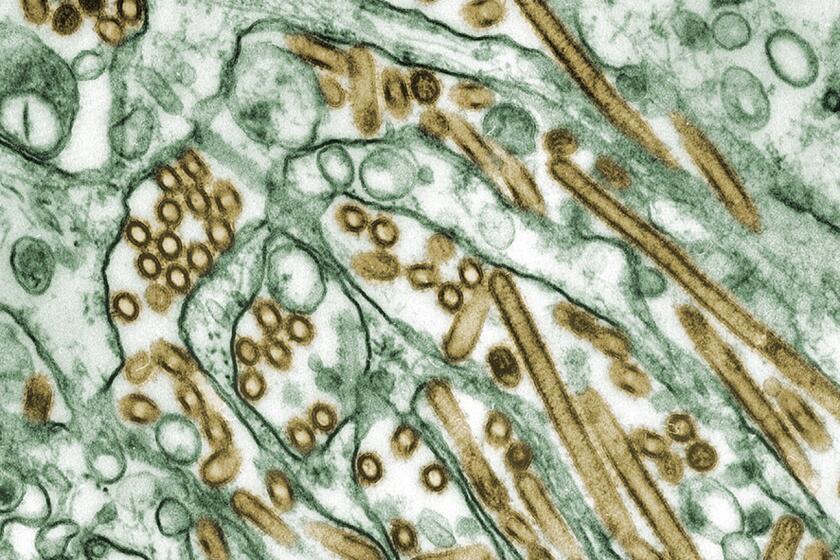Large Flock of Visitors Await Birds : Swallows: Hundreds gather to celebrate the annual return to Mission San Juan Capistrano.
For the last 30 years, one of Dorothy O’Quinn’s dreams was to come to Mission San Juan Capistrano and watch the fabled March 19 return of the swallows.
The 81-year-old retired schoolteacher’s wish was finally fulfilled Thursday. Armed with her camera, O’Quinn arrived at the mission early and couldn’t help but keep scanning the skies.
To hear her tell it, she expected the sky to darken and thousands of the migratory birds to swoop down into the mission. When a thundering flock failed to materialize, O’Quinn admitted, she was disappointed.
“But you mean you cannot actually see thousands of swallows today?” Quinn asked another perplexed visitor.
Quinn was among hundreds of tourists who flocked to the mission to celebrate Swallows Day.
Paul Arbiso, the city patriarch who has rung the mission bells for the last six decades to announce the arrival of the swallows, was true to the call of duty again Thursday.
The 96-year old Arbiso, a veteran of of World War I and a descendant of Juaneno Indians, tugged on the ropes of the bells for more than a minute. A small flock of pigeons fluttered away on hearing the commotion while a hummingbird flitted frantically overhead.
The crowd that gathered to watch Arbiso continue the tradition dispersed to take in other ceremonies on the grounds of the mission.
Many visitors acknowledged that they didn’t spot any swallows, while some said they saw a few of the birds flying over the mission grounds. Arbiso said he didn’t see any swallows before ringing the bell at 8:02 a.m., noting that his bell-ringing serves to satisfy the tradition. “Many years ago, I would ring the bell after I saw them,” Arbiso said. “But now they come earlier (than Swallows Day) or later. I tell you, the birds are smarter than us.”
Among the day’s most-talked-about events was a touching St. Joseph’s Day Mass held inside the mission’s new church. For the first time in the mission’s 216-year history, the native language of the Juaneno Indians who built the mission, Acagchemem (ha-SHAY-mem), was spoken during the traditional Mass.
Monica Arcy of Riverside recited the Lord’s Prayer in the language, which historians feared had been lost. Arcy later quoted Scriptures to pay respect to her ancestors and to “celebrate fire, water, earth, and air--essential elements of life.”
Later in the church ceremony, a few Juaneno Indians sang and danced in a circle at the altar.
The Juanenos’ involvement in the Swallows Day Mass was a sign that relations between the tribe and the church are being mended. The relationship soured two years ago when tribal leaders protested what they then described as their diminishing role at the mission.
But it was a different scene Thursday. Jerry Nieblas, a Juaneno Indian and mission employee, presented Msgr. Paul Martin with a special issue of a new mission poster as “an act of goodwill.”
Several Juanenos broke down in tears during the Indian portion of the service.
“I feel so proud,” said Evelyne Villegas-Lobo, a Juaneno Indian and the city’s matriarch, as she brushed a tear away. “I feel as if my ancestors are rejoicing.”
Earlier, mission museum director Nicholas Magalousis announced that the mission was continuing an international effort to stabilize some of the crumbling buildings on the grounds.
Magalousis said the project will cost $10 million and will involve Dr. Kalliope Theocharidou, an internationally renowned architect and preservationist from Greece.
The mission will soon embark on fund-raising ventures, Magalousis said.
“What we are doing to preserve this important piece of California history will go a long way to help preserve historic missions and other structures around the world,” Magalousis said.
Sign up for The Wild
We’ll help you find the best places to hike, bike and run, as well as the perfect silent spots for meditation and yoga.
You may occasionally receive promotional content from the Los Angeles Times.



